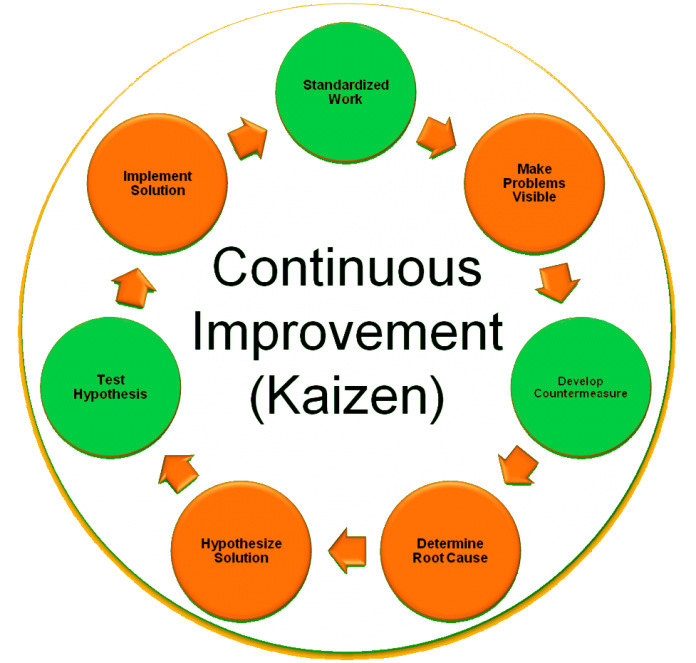Kaizen is the Japanese name for continuous improvement. While Kaizen is really about improvement involving everyone everyday it is often associated with a structured event. Kaizen events fill the gap between individual, very local improvement initiatives and bigger initiatives such as value stream improvement. They are essential to get cross-functional and multi- level teams involved in a Lean transformation. In that respect, kaizen events have a dual role – to make improvements but also to teach and communicate. In order for a kaizen to be successful it requires a great deal of both preparation and follow-up. Here are 10 things I have learned over the years to avoid during a kaizen:
- Lack of a charter A charter is used to establish the framework of the kaizen. It determines what the problem statement is, relevant background information, time frame, team members, some estimation of the resources involved, and how the improvement
will be measured. Without a charter the kaizen could take a very different direction. - Lack of identification of critical success factors In order to make the kaizen successful you need to identify what elements are critical to the process. You must determine how you will measure the success of this kaizen so you know if your countermeasures are effective. Without measurement the kaizen can go on and on.
- Scope is too large The size or amount you will tackle within the kaizen is important for getting things done. If the scope is too large you run the problem of never implementing an improvement.
- Kaizen event not linked business plan You want to do kaizens that will help you meet your organization’s goals. It can be wasteful to improve processes that are not part of the plan since resources to perform kaizens are limited.
- Poor team selection The team members on the kaizen are the brain power and manpower behind the improvement. Picking the team members should be an important part of planning the kaizen. You need to consider people’s skill sets, expertise or knowledge, individuals within and outside the process, and who will provide the learning.
- Striving for perfection If you try to achieve perfection you may well be at the kaizen a very long time. Perfection is elusive. If you can accomplish 80% of what you set out to and meet the goals of the charter then call it complete. You will be back to improve from this new state again.
- Poor follow through In some kaizens it can be difficult to complete all the items you want within the time frame of the kaizen. Failure to follow through on these can undermine the team’s efforts. It is also necessary to ensure the improvements that are made are maintained to prevent backsliding.
- Not presenting results Failure to present the results after the kaizen can cause the team to feel unappreciated. It also restricts learning throughout the organization. Another area can have a similar situation that can benefit from knowing how this team solved the problem.
- Lack of visibility for non-participants Getting the buy in from those who are not participating on the team is important for sustaining the improvement. When you are part of team you are involved in the solution. For those who are not we need to make them aware of the improvements the team is making. If you don’t they will naturally resist the improvement.
- Lack of management commitment Management must not just support the kaizen but actively participate. Kaizens are as much a learning opportunity as anything else in the organization. Management must ensure the team has everything they need to be
successful and when they are management must recognize the accomplishment. Learning what not to do is as equally important as learning what not to do. Don’t make any of these mistakes on your kaizen and it will be a success. From your experience what advice would you give others to be successful at kaizen?











